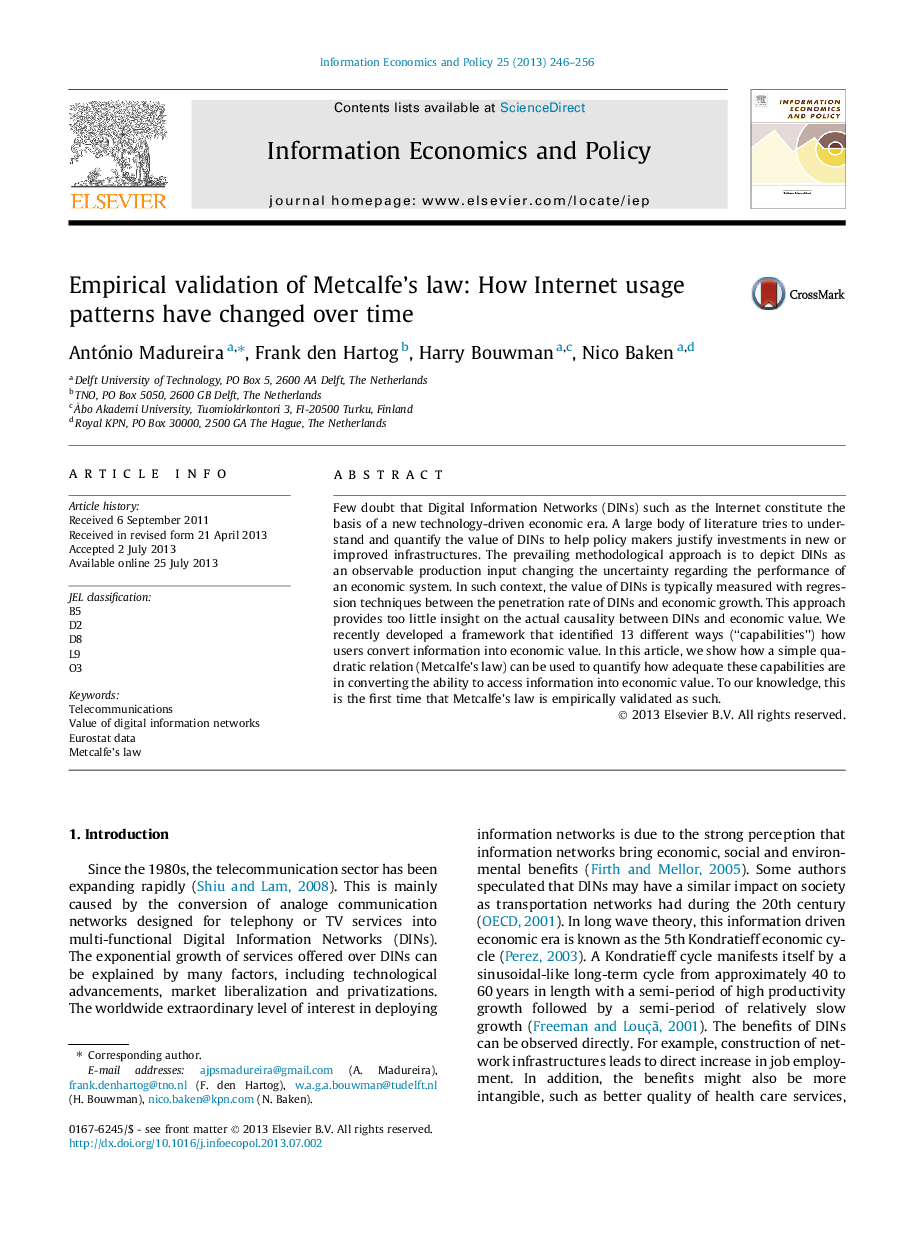| Article ID | Journal | Published Year | Pages | File Type |
|---|---|---|---|---|
| 5075843 | Information Economics and Policy | 2013 | 11 Pages |
Abstract
Few doubt that Digital Information Networks (DINs) such as the Internet constitute the basis of a new technology-driven economic era. A large body of literature tries to understand and quantify the value of DINs to help policy makers justify investments in new or improved infrastructures. The prevailing methodological approach is to depict DINs as an observable production input changing the uncertainty regarding the performance of an economic system. In such context, the value of DINs is typically measured with regression techniques between the penetration rate of DINs and economic growth. This approach provides too little insight on the actual causality between DINs and economic value. We recently developed a framework that identified 13 different ways (“capabilities”) how users convert information into economic value. In this article, we show how a simple quadratic relation (Metcalfe's law) can be used to quantify how adequate these capabilities are in converting the ability to access information into economic value. To our knowledge, this is the first time that Metcalfe's law is empirically validated as such.
Keywords
Related Topics
Social Sciences and Humanities
Business, Management and Accounting
Management of Technology and Innovation
Authors
António Madureira, Frank den Hartog, Harry Bouwman, Nico Baken,
